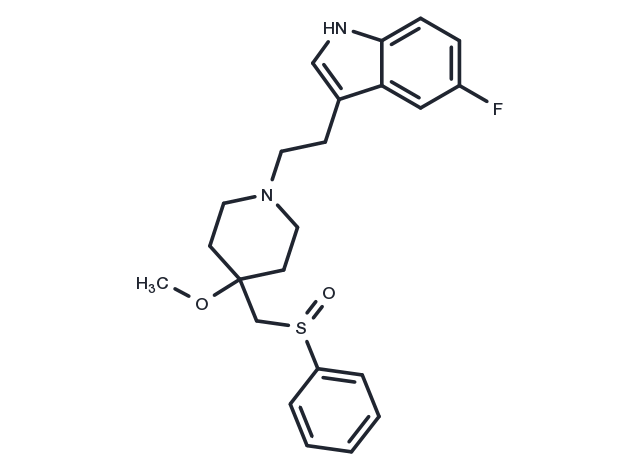Powder: -20°C for 3 years | In solvent: -80°C for 1 year


GR 159897 is a competitive, brain-penetrated non-peptide NK2 receptor antagonist with anti-tumor effects. GR 159897 inhibits binding of [3H]GR100679 to human NK2-CHO cells and rat colon membranes (pKis: 9.51 and 10, respectively). It can antagonize bronchoconstriction.

| Pack Size | Availability | Price/USD | Quantity |
|---|---|---|---|
| 1 mg | 35 days | $ 110.00 | |
| 5 mg | 35 days | $ 458.00 |
| Description | GR 159897 is a competitive, brain-penetrated non-peptide NK2 receptor antagonist with anti-tumor effects. GR 159897 inhibits binding of [3H]GR100679 to human NK2-CHO cells and rat colon membranes (pKis: 9.51 and 10, respectively). It can antagonize bronchoconstriction. |
| Targets&IC50 | NK2:10 (pki)( Rat colon membrane), NK2 (human):9.51(pki) (CHO cell) |
| In vitro | GR 159897 (10-30 μM; 72 hours; 4TBM, 4TLM, 4THM, and 4T1 cells) treatment enhances phosphorylation of P38. At the same time, it also inhibiting AKT activation in all metastatic cell lines whereas phosphorylation of ERK decreased in 4TBM, 4TLM, and 4THM but not in 4T1 cells. GR 159897 (10-30 μM; 72 hours; 4T1, 4THM, 4TLM, and 67NR cells) treatment inhibits proliferation of cells in all cell lines dose-dependently, a response more pronounced in 4T1, 4THM and 4TLM cells compared to 67NR cells [2]. |
| In vivo | GR 159897 (0.12 mg/kg; i.v.; guinea-pigs) treatment effectively antagonizes bronchoconstriction caused by GR64349. It has a long duration of action (3 h) [1]. |
| Molecular Weight | 414.54 |
| Formula | C23H27FN2O2S |
| CAS No. | 158848-32-9 |
Powder: -20°C for 3 years | In solvent: -80°C for 1 year
You can also refer to dose conversion for different animals. More
bottom
Please see Inhibitor Handling Instructions for more frequently ask questions. Topics include: how to prepare stock solutions, how to store products, and cautions on cell-based assays & animal experiments, etc.
GR 159897 158848-32-9 Others GR159897 GR-159897 inhibitor inhibit
